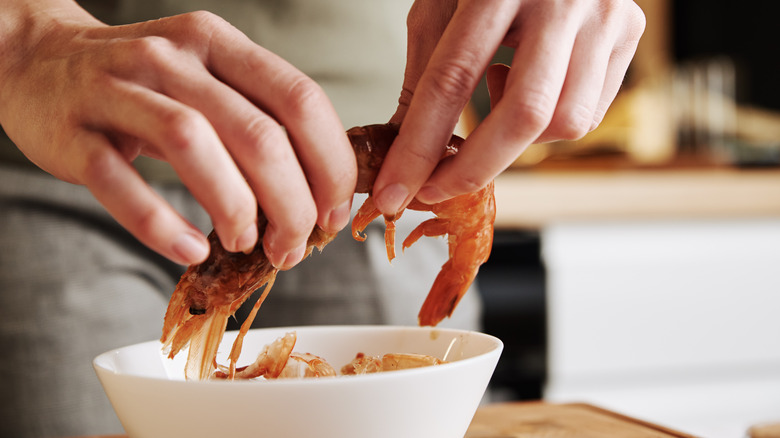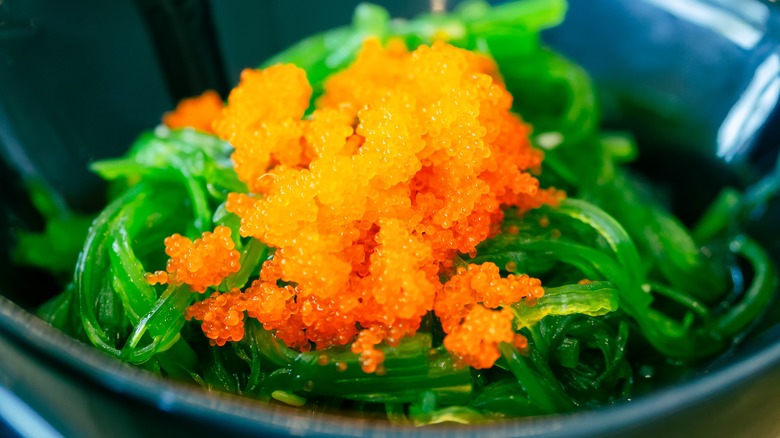What To Do If You Find Orange Roe In Shrimp
There's something disconcerting about finding an unexpected surprise in your food, but if you discover an orange trail in your shrimp, you may have hit gold. It all depends on your point of view. The tiny translucent orange orbs, about .38 mm in diameter, are shrimp eggs. They are perfectly safe to eat and chock-full of nutritional goodness in the form of vitamin B12, minerals, essential fatty acids, amino acids, phospholipids, and carotenoids. And although some crustacean lovers choose to discard them, others swear shrimp eggs rank among the tastiest bounties of the sea. In fact, they are considered a delicacy in some parts of the world.
Also known as roe and, and in certain circles, caviar (although, technically the term caviar applies only to sturgeon roe), shrimp roe can be eaten on its own or incorporated into more complex dishes. Given its gelatinous texture and subtle sweetness, it works especially well with pasta and sauces. But before you decide what to do with shrimp roe, you have to get to it. To harvest roe from fresh shrimp, grab the whole shrimp by its head. Hold it belly up and press two fingers into the groove between the head and the body. Slowly swipe down, scooping the roe away from the body as you swipe. (Heads already removed? Just start at the top of the body and swipe toward the tail). By the time you finish collecting the roe, you'll have a feel for its texture, but what about flavor?
From simple to sublime
The word "briny" is often associated with fish roe. That's especially true of authentic sturgeon caviar, but there are subtle differences from one species to another. Flavor profiles vary from slightly sweet to decidedly savory. Trout roe is sweet and grassy. Salmon roe (known as tobiko in sushi circles) is salty and briny. Shrimp roe (aka ebiko) falls somewhere in the middle, boasting a mild sweetness with a noticeable crunch and a subtle pop that releases a burst of flavor. Maybe that's why San Diego-based fishmonger Tommy Gomes, a noted expert and advocate for sustainable fishing practices, describes it as "an ocean of starburst fruit chew flavor." Gomes, a fan of keeping it simple, shared his favorite preparation on YouTube. After harvesting the roe, divide it into small servings (about a ¼ teaspoon each). Top each dollop with a sprinkle of applewood bacon salt, a drop of fresh lime juice, and a drop of pomegranate balsamic vinegar. Seafood nirvana.
Other popular preparations include incorporating shrimp roe into noodles, sushi, or kimbap. Try folding it into pasta or risotto right before serving. Another option? Don't remove the roe at all. If you're preparing a recipe that calls for shell-on shrimp, the roe will stay in place, bringing an unexpected depth to the dish. And if you're craving the subtlety of shrimp roe, but don't have immediate access to fresh shrimp, consider adding dried shrimp roe powder to your spice collection.

